Do you think alchemy is about turning ordinary metal into gold? The following article on the 7 stages of spiritual alchemy dispels such notions by delving deep into this topic.
For centuries, alchemy has become synonymous with gaining wealth and immortality. But this perception of alchemy is largely misguided: it stems from confusing the metaphors of original alchemy with reality. Alchemy, as a result, became a pseudo-science of transforming lead into gold.
These days, alchemy is thought of as something quaint, even a little occult; a relic of the dark ages. But there is tremendous wisdom to be found within this obscure, archaic philosophy.
Contrary to popular belief, alchemy is not about transmuting base metals into gold – instead, it’s the secret science of illumination, inner liberation, and awakening to your True Nature.
What is Spiritual Alchemy? (Definition)
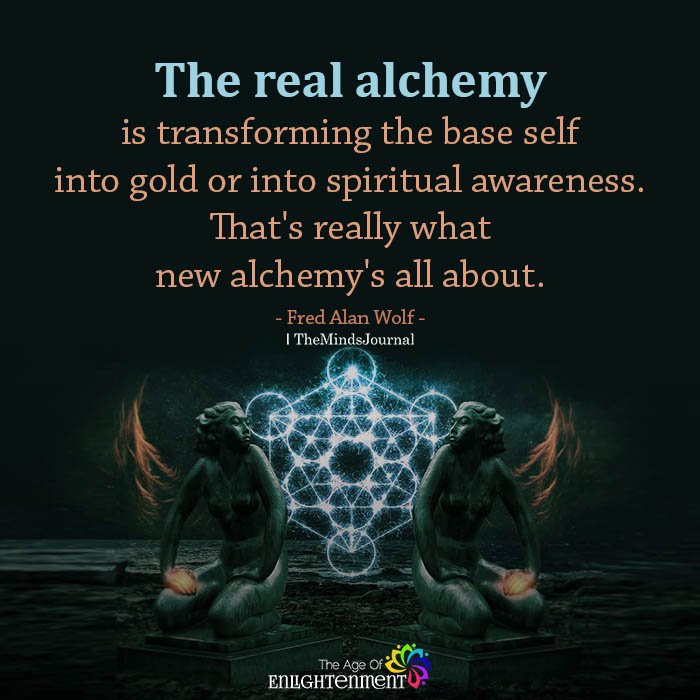
Aurum Nostrum Non Est Aurum Vulgi: Our gold is not common gold. – Alchemist saying
Whether you understand alchemy as a science or as a type of spiritual psychology, alchemy is ultimately concerned with transformation and change.
While physical alchemy is concerned with altering and transforming the properties within matter, spiritual alchemy is concerned with freeing your spiritual self which is obscured within you by the unrefined parts of your ego (e.g., your fears, personal beliefs, self-loathing, etc.)
When it comes to physical alchemy versus spiritual alchemy, spiritual alchemy is vastly more multi-faceted. Perhaps the most fascinating aspect of spiritual alchemy is its objective: to free you from your core wounds, core beliefs, soul loss, and other self-destructive personality structures in order for you to live freely and joyfully.
Existing in “pure being,” spiritual Oneness, or Soul-centered awareness is the ultimate state of transformation; the gold of spiritual alchemy. This is a process that attempts to restructure your personality and the various levels of attachment, avoidance, and identification that you possess.
These days, we can thank famous 20th-century psychiatrist C. G. Jung for their contribution to the deepening interest in alchemy.
In fact, much of his theory is heavily steeped in the rich symbolism of alchemy, creating a colorful and sophisticated roadmap by which we can learn to get ourselves “out of our own way,” stop being our own enemies and allow our fullest potential to unfold.
Read: 9 Qualities Of A Spiritual Warrior
Jung, Symbolism, and The Science of Transformation
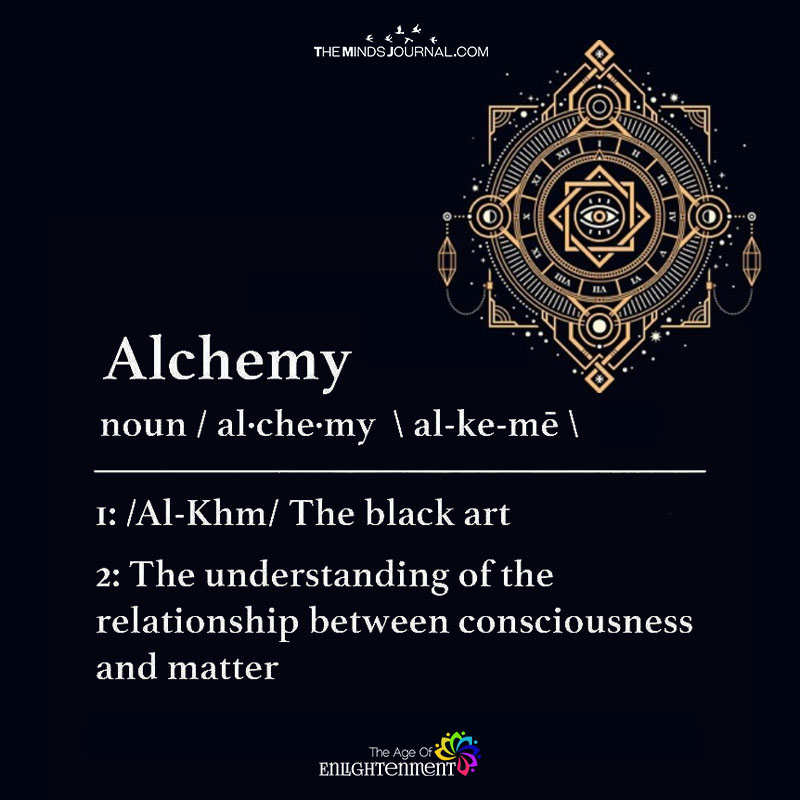
As mentioned above, renowned Swiss psychiatrist Carl Jung is commonly recognized as the main advocate and promoter of alchemy. He pointed out that he would notice many of the symbols found in alchemy texts mysteriously showing up in the dreams of his patients – most of whom had no prior knowledge of alchemy.
Jung also concluded that alchemy was a superb way of expressing the universal symbols of life, and was, therefore, a highly effective tool for psychological insight.
In his own words, he wrote,
Alchemy has performed for me the great and invaluable service of providing material in which my experience could find sufficient room, and thereby made it possible for me to describe the individuation process at least in its essential aspects.
Three Powerful Spiritual Alchemy Symbols
Materia Prima, The Philosopher’s Stone, and Gold are the three most powerful and commonly known symbols relating to alchemy.
Materia Prima (or “first matter”), is an Alchemic symbol that reflects the notion that all the universe originated from a primitive, formless base.
The idea of “Materia Prima” can be traced back to Aristotle who understood that there’s a force that holds all other forms in existence together but is itself invisible – these days, we refer to it as “Spirit.”
Materia Prima, as the invisible womb or unseen force, is a field of pure potential that can only come into existence when it is embodied within a “form.”
In alchemy, the Materia Prima or primal material is that which is left over after we have reduced matter into its purest essence. This process is a powerful psychological symbol because it describes the internal experience of arriving at a “core realization,” or in other words becoming aware of the root cause of a belief or trauma within us.
By working with the Materia Prima of our inner selves, we can go on a journey to find the Philosopher’s Stone (spiritual liberation) which transforms any of our base qualities (selfishness, arrogance, vanity) into gold (kindness, tolerance, humility, etc.). We’ll explore these symbols more in the next section.
Why Learn About Spiritual Alchemy?
“What’s the point of learning about spiritual alchemy?” you might be wondering.
My answer is that in life, we all need maps that can help us orient ourselves to our environments. In terms of the inner landscape and the journey of spiritual awakening, alchemy is one of the oldest practices and metaphors out there.
As such, we can use the various stages and symbols of alchemy to better understand where we are, and where we’re going on a path that can otherwise feel quite disorienting and confusing.
The 7 Stages of Spiritual Alchemy
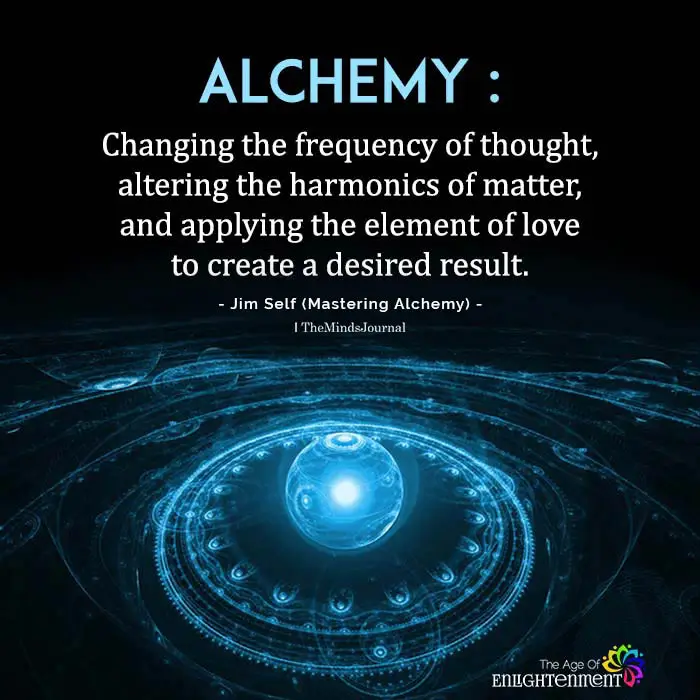
Solve et coagula: Dissolve and coagulate. – Alchemist saying
The Latin expression “solve et coagula” is derived from “solve,” meaning to break down and separate, while “coagula” describes the process of bringing elements back together (coagulating) into a new, higher form.
Interestingly, “solve et coagula” is a brilliant psychological metaphor. By pursuing Gold (or listening to our intuitive “higher calling”) we “break down” limiting parts within us that are in the way of our transformation (Philosopher’s Stone) into a free and whole being (coagulation).
This journey of death, rebirth, and transformation has often been summarized into the four levels of alchemy:
I) Nigredo (or “blackening” – symbolic of the death of old ways of being)
II) Albedo (or “whitening” – symbolic of the process of rebirth and Soul consciousness)
III) Citrinitas (or “yellowing” – symbolic of the development of Spirit consciousness)
IV) Rubedo (or “reddening” – symbolic of the attainment of Spiritual Liberation)
I’ll break down these four levels of alchemy below.
Note: while there are no universal stages of alchemy due to the sheer number of different schools out there, here are some of the most widely accepted stages and how they pertain to the spiritual awakening journey:
1. Calcination
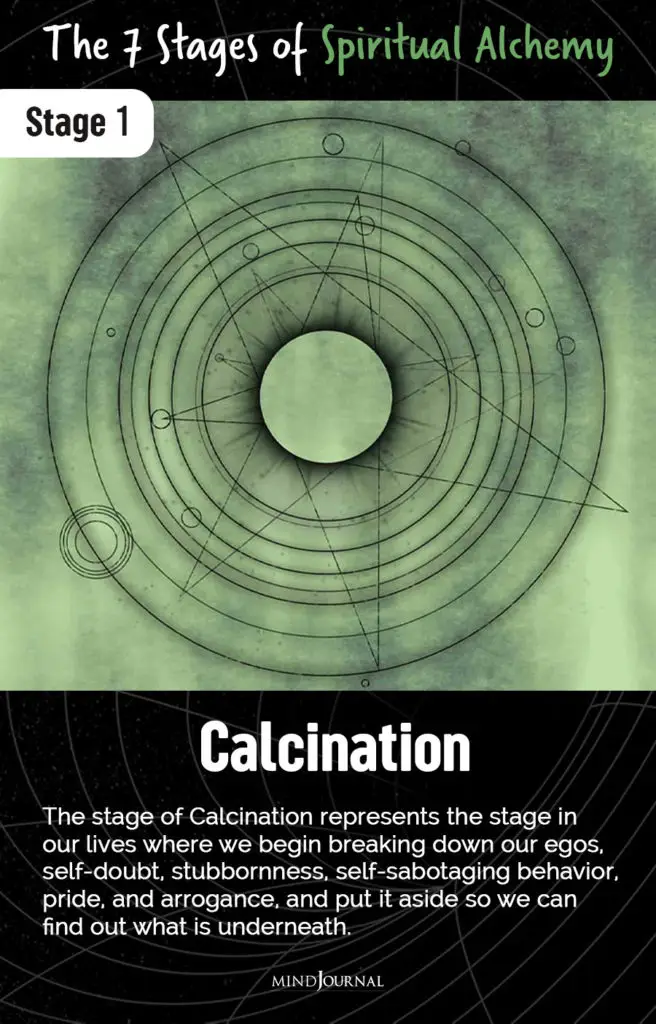
Calcination is the process of heating and decomposing raw matter – or in other words, breaking down parts of ourselves that are in the way of our own happiness. Often we’d rather be right or fulfill an idea of “perfection” than be truly happy, so we continue neglecting the exploration of ourselves.
Calcination represents the stage in our lives where we begin breaking down our egos and the self-doubt, stubbornness, self-sabotaging behavior, pride, and arrogance that we possess, putting them aside so we can find out what’s underneath.
2. Dissolution
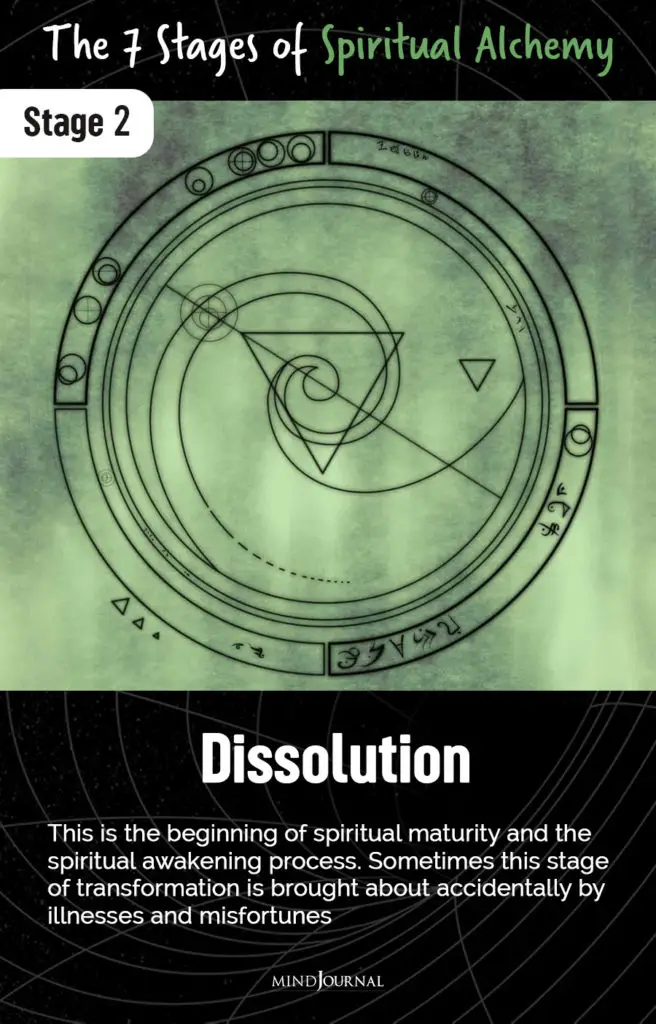
Once we’ve broken down all of our personality characteristics that were in the way of our evolution, we’re left with the process of dissolution which is the beginning of feeling less identification with our illusionary sense of self.
Once we’re free from the strong grip of the egocentric self, we can take one step back and truly observe our positive and negative qualities.
In this stage, our inability to take responsibility for our many faults, our repressed traumas, and other inner tensions rise to the surface, causing us to become aware of how our behavior might be affecting others.
This stage is, therefore, the beginning of spiritual maturity and the spiritual awakening process.
Often, this stage of transformation is brought about by sudden illnesses, mental health crises, or misfortunes in our lives that cause us to closely pay attention to what we’re doing, shocking us out of our avoidance patterns (such as workaholism, addictions to certain relationships, drugs, unhealthy habits, etc.).
Read: Jim Carrey On Awakening: How He Began His Spiritual Journey
3. Separation
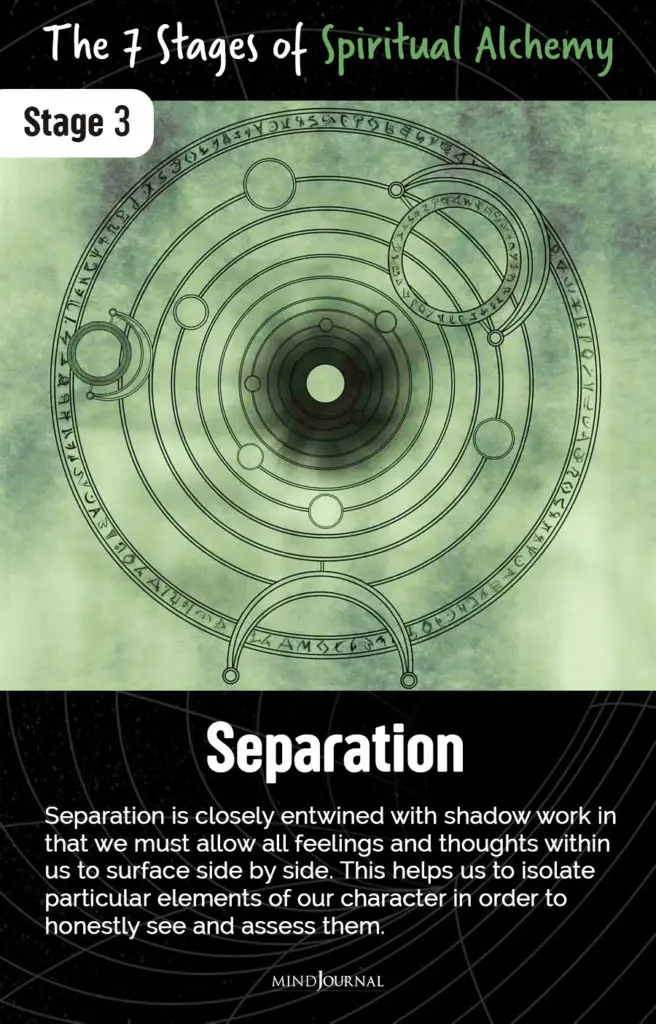
Separation is the stage where we make our thoughts and emotions more defined by practicing introspection, self-awareness, and self-analysis.
A simple example of this process is understanding the difference between our anger and our grief or the conflicting desire to isolate ourselves but also connect with other people.
The process of separation involves truly becoming aware of our authentic feelings towards others and ourselves.
In this stage, we choose to experience our anger, frustration, or disappointment towards another or ourselves, rather than reverting back to the old habit of dutifully trying to “forgive and forget” because it is the “right” or comfortable thing to do (or, on the other hand, to react and hold a grudge).
Separation is closely entwined with shadow work in that we must allow all feelings and thoughts within us to surface side by side and become aware of our “darker side.” This practice helps us to isolate particular elements of our character to honestly see and assess them, then eventually consciously embrace and transform them.
4. Conjunction
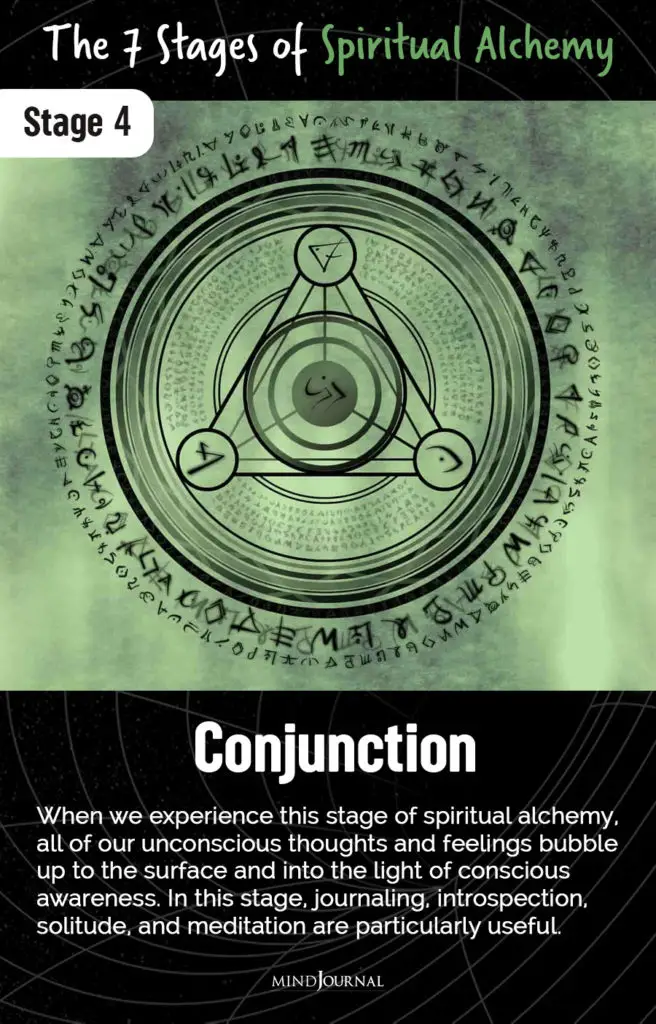
After the purification and clarification of the first three stages, we must integrate and combine the remaining elements within us through the process of “Conjunction.”
While in the previous step, we learned to distinguish all of the feelings and thoughts within us, Conjunction provides the inner space – the simmering – that is required for us to truly and honestly accept all the parts of our authentic selves.
When we experience this stage of spiritual alchemy, many of our long-forgotten (or suppressed) unconscious thoughts and feelings bubble up to the surface and into the light of conscious awareness.
In this stage, journaling, introspection, solitude, and meditation are particularly useful practices to facilitate movement toward the next stage.
(Learn more about how to journal.)
5. Fermentation
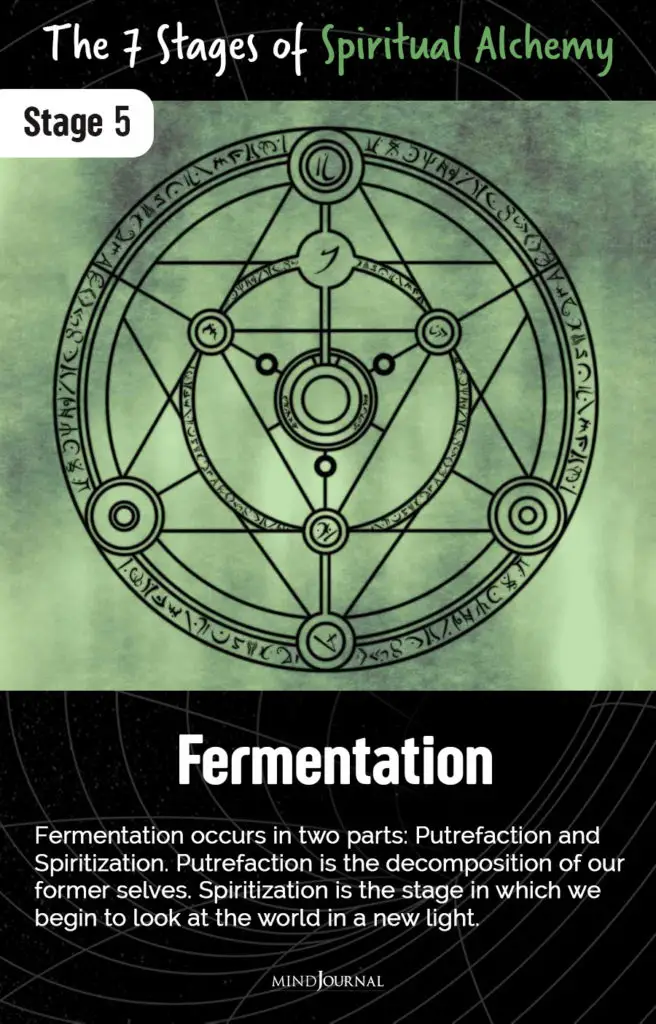
Fermentation is the beginning of our process of rebirth. This stage can be compared to the death of a grape, which then becomes the birth of wine.
While the first four stages involved working with aspects of our old personality, in the stage of Fermentation we begin to experience moments of our more “refined” self.
Fermentation occurs in two parts: Putrefaction and Spiritization.
Putrefaction is the decomposition of our former selves; the process of inner death by which the old elements of our conscious and unconscious minds are allowed to rot and decompose. (Some call this stage The Dark Night of the Soul as it can be followed by troublesome mental states such as depression.)
On the other hand, Spiritization is the stage in which we begin to look at the world in a new light. With the right guidance and with solid inner work, Spiritization involves letting go of all the aspects of ourselves and our lives that don’t serve or contribute to our spiritual transformation.
This is when we taste moments of great inner peace and stillness.
6. Distillation
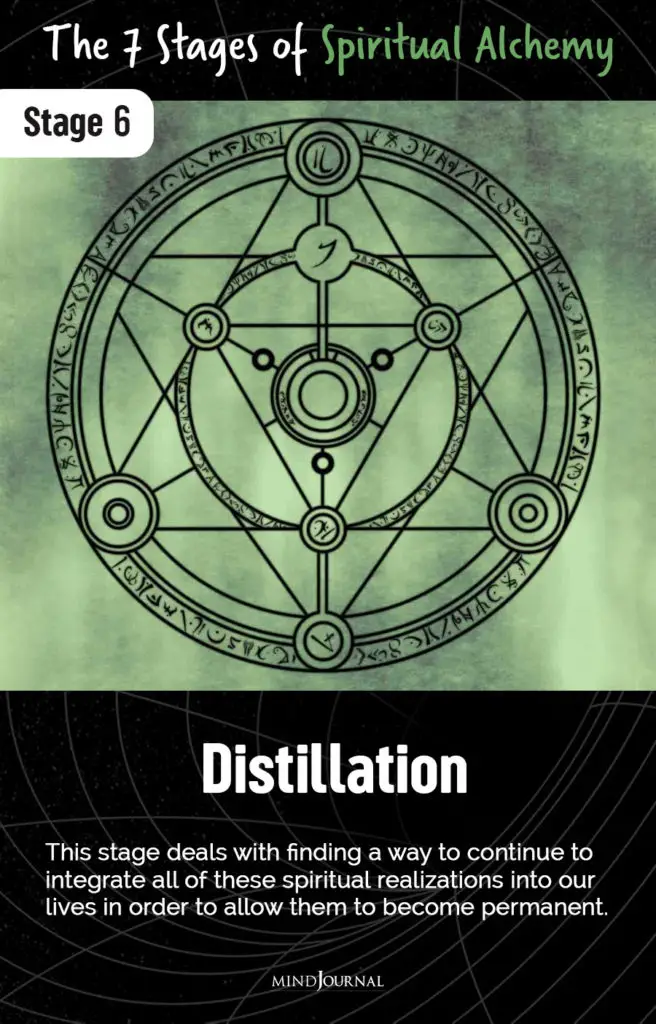
Once we begin our Spiritization, we must find a way to continue to integrate all of these spiritual realizations into our lives in order to allow them to become permanent. Distillation is the level of further purification.
One example of Distillation is finding ways to live from a daily place of inner peace – even in the most mundane circumstances.
With enough repeated practice of constantly dying and being reborn in the present moment without entering again into the habits, identifications, and cycles of the mind, we experience a strong and profound inner transformation. In the East, this is what’s referred to as self-realization or spiritual enlightenment.
Certain practices such as mindfulness, meditation, yoga, and self-inquiry are useful in this stage to facilitate movement toward the next stage.
Read: How To Answer Your Calling And Find Your Life Purpose
7. Coagulation
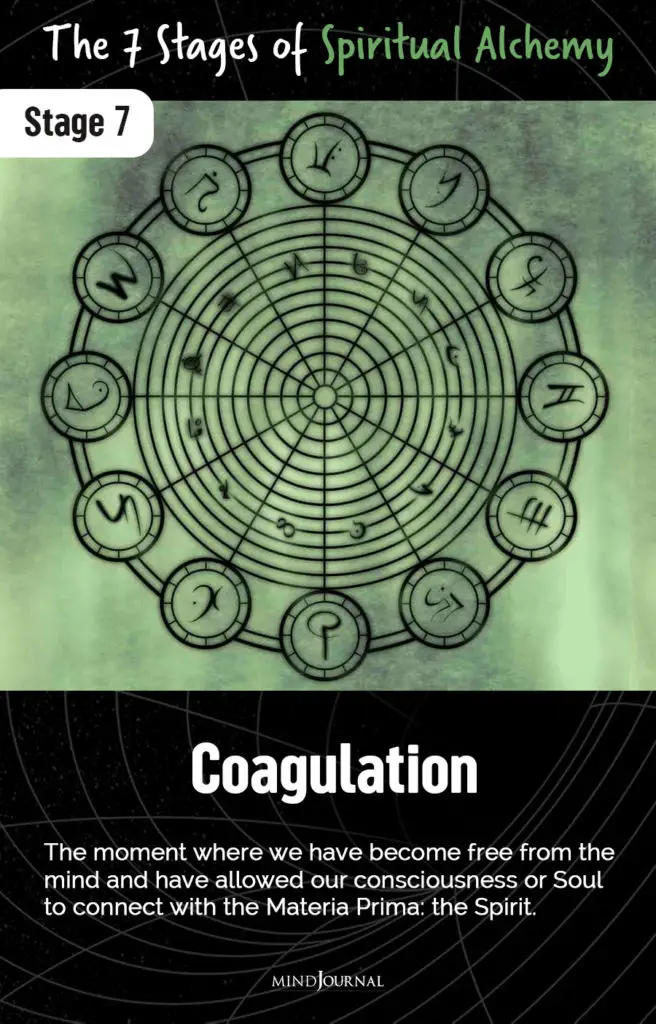
Similar to the blood’s ability to form clots and stop bleeding, Coagulation is the moment when we’ve “broken open the head,” or in other words, we have become free from the mind and our consciousness or Soul has united with the Materia Prima: the Spirit.
It’s at this point that we’ve found the Elixir of Life also known in alchemy as The Philosopher’s Stone.
This non-dualistic meeting point between two opposites – the spiritual Self and human self, ego and Soul, inner and outer worlds – represents the culmination of the spiritual journey, the holy moment of spiritual freedom or enlightenment.
Read: 15 Questions To Discover Your Life Purpose
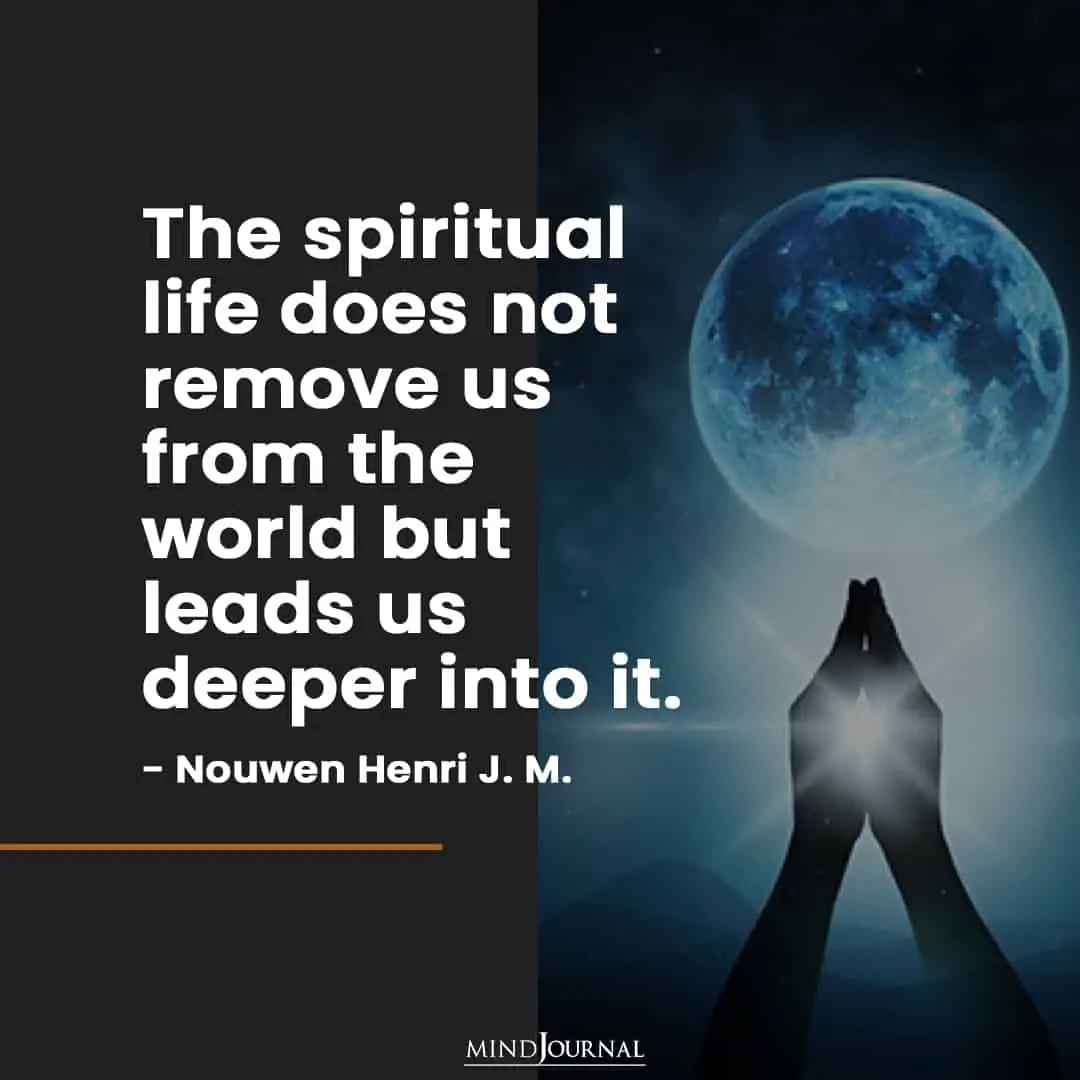
Alchemy’s greatest achievement is to mirror the interrelationship between mind and matter, ego and soul, self and world. It embodies and points to the union of opposites, the transcendence of division, and the Oneness of all beings.
I hope this article has helped to explain this mysterious topic more in-depth, provide you with an alchemical roadmap to understand your spiritual progress and illuminate your understanding.
What are your thoughts about spiritual alchemy? I’d love to hear below!
Written By: Mateo Sol
Originally Appeared On: Loner Wolf
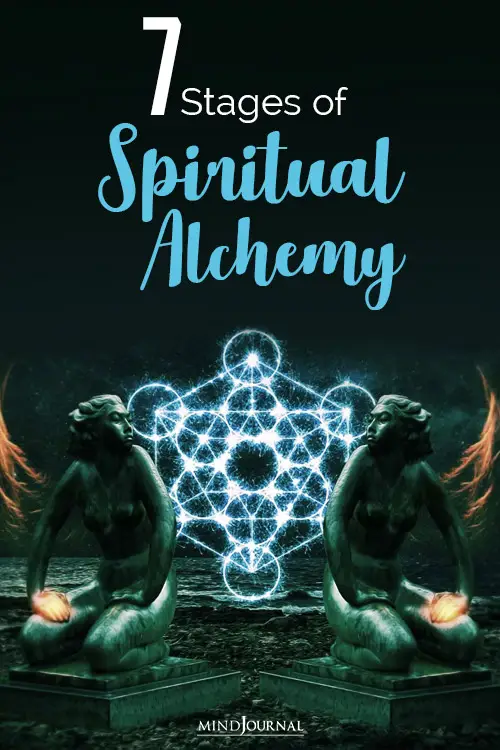
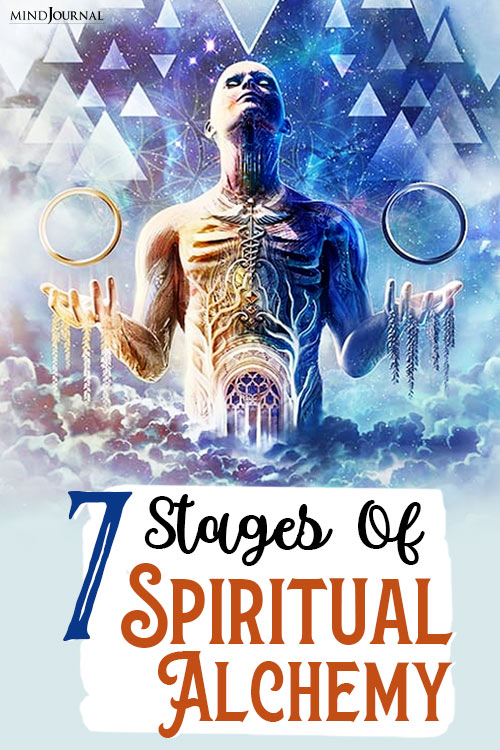
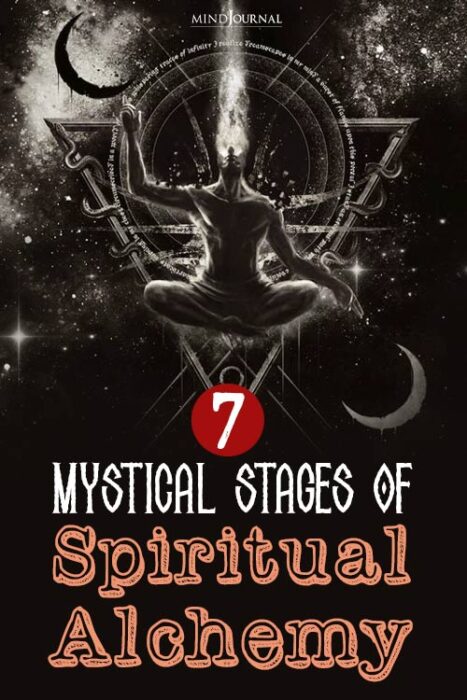
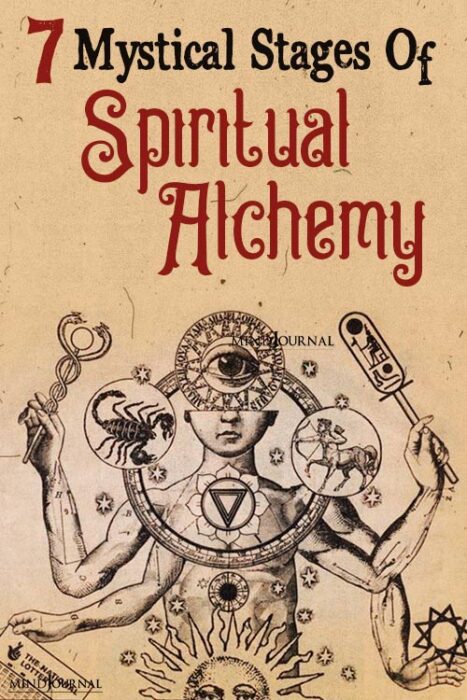
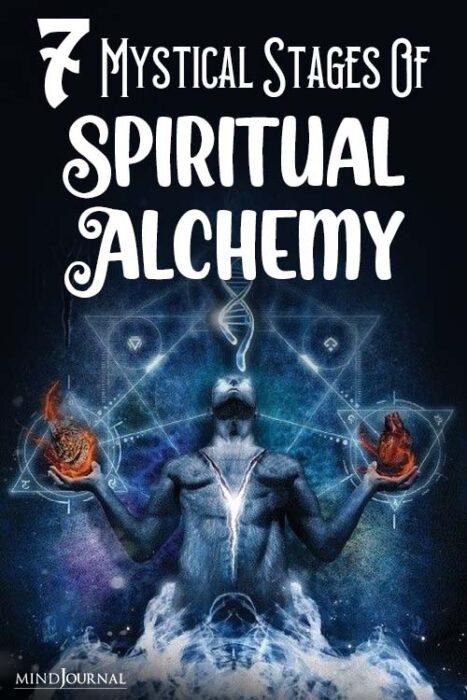
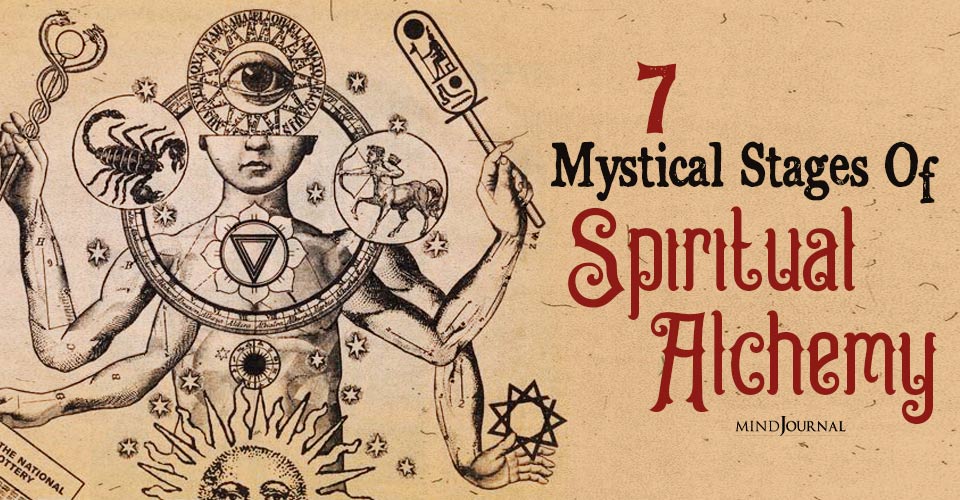
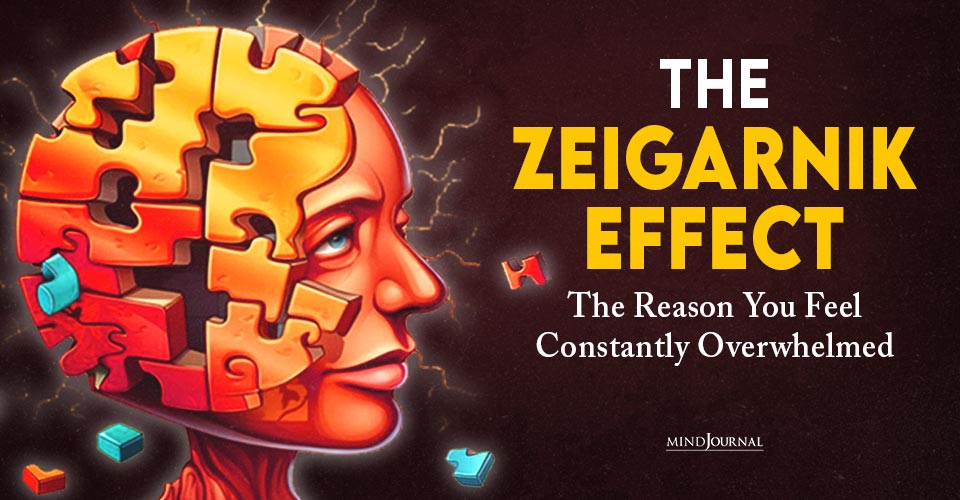



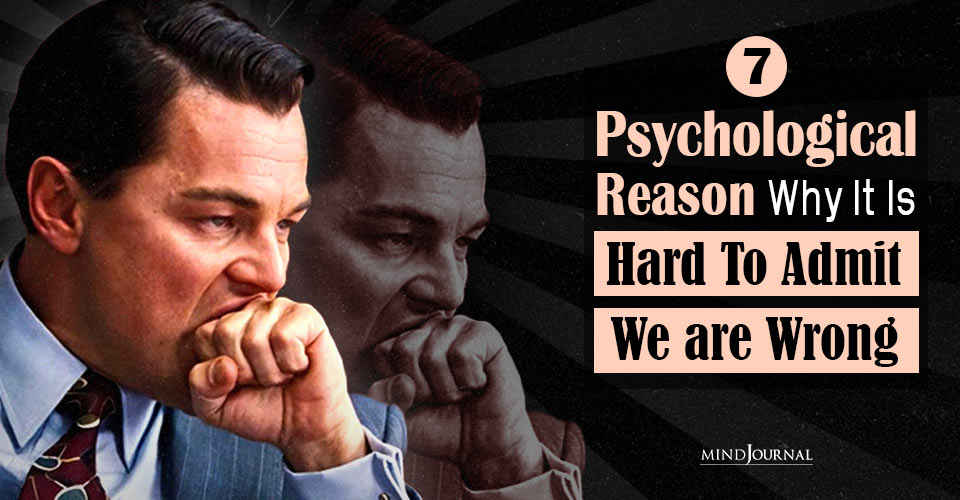


Leave a Reply
You must be logged in to post a comment.